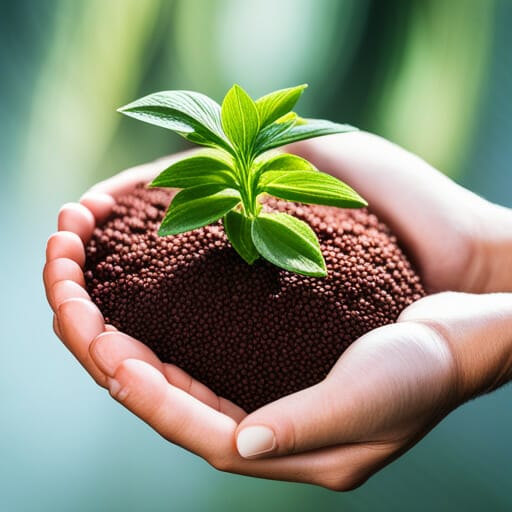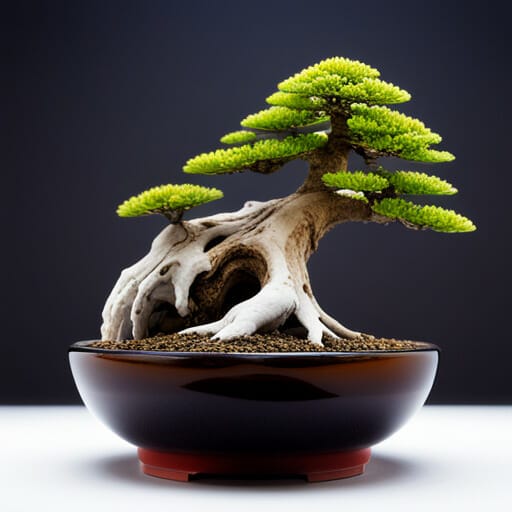Bonsai cultivation requires careful consideration of the soil composition to ensure optimal growth and health of the trees. Akadama soil has long been favored in Japan for its beneficial properties, such as excellent aeration, drainage, water retention, nutrient retention, and slightly acidic pH. However, its availability and cost can pose challenges for bonsai enthusiasts in certain regions.
Fortunately, there are alternative options to Akadama that can be explored. Vermiculite, for instance, offers improved drainage and aeration while retaining essential water and nutrients.
Lava rocks, with their varying water and nutrient-holding capacities, provide good aeration and drainage properties. Pumice, a lightweight volcanic rock, is another viable alternative with high aeration and drainage but lower water and nutrient-holding capacities. It is predominantly composed of glassy debris and serves as a substitute for Akadama in bonsai soil.
On the other hand, perlite, although not ideal due to its alkaline nature, is lightweight but may not be suitable for bonsai tree species that prefer acidic soil.
This article will explore these top bonsai soil options as alternatives to Akadama, providing a comprehensive comparison and recommendations for bonsai enthusiasts seeking suitable soil choices.
Contents
- 1 Quick Points
- 2 Akadama Overview
- 3 Alternative Options
- 4 Comparison and Recommendations
- 5 Frequently Asked Questions
- 5.1 Can vermiculite be used as a standalone bonsai soil or does it need to be mixed with other materials?
- 5.2 Are there any specific bonsai tree species that thrive better in soil with a higher pH level?
- 5.3 Can lava rocks be used as a complete replacement for Akadama in bonsai soil?
- 5.4 Is pumice suitable for bonsai trees that require a higher water-holding capacity in their soil?
- 5.5 Are there any concerns or drawbacks to using perlite as an alternative to Akadama in bonsai soil?
Quick Points
- Akadama soil is a favored option in Japan for bonsai cultivation due to its beneficial properties such as aeration, drainage, water retention, nutrient retention, and slightly acidic pH.
- However, the availability and cost of Akadama can be challenging for bonsai enthusiasts outside of Japan.
- Vermiculite is a potential alternative to Akadama that offers improved drainage, aeration, and retention of water and nutrients.
– Pumice is another viable alternative with high aeration and drainage properties, although it has lower water and nutrient-holding capacities compared to Akadama.
Akadama Overview

Akadama is a widely used bonsai soil in Japan that is known for its ability to meet the requirements of good aeration, drainage, water retention, nutrient retention, and slightly acidic pH, with a pH range of 5.1-5.5.
It is commonly used in bonsai cultivation due to its favorable characteristics. This soil provides an ideal environment for root growth and development, allowing the bonsai tree to thrive.
Akadama is particularly valued for its excellent water retention capabilities, which prevent root rot while providing adequate moisture for the tree. Additionally, it has the ability to retain essential nutrients, ensuring that the bonsai tree receives the necessary nourishment.
However, it should be noted that Akadama can be expensive and difficult to obtain in certain locations outside of Japan.
Alternative Options

Vermiculite, lava rocks, pumice, and perlite are all potential options to consider as alternatives to Akadama in bonsai soil. These alternatives offer various benefits and can be used to create a suitable environment for bonsai trees.
Vermiculite improves soil drainage and aeration while retaining water and nutrients, making it a good choice for bonsai soil.
Lava rocks provide good aeration and drainage, and their water and nutrient-holding capacities vary depending on their composition.
Pumice, a lightweight volcanic rock, offers high aeration and drainage but has low water and nutrient-holding capacities. It is mainly composed of glassy debris and can be used to remove heavy metals.
On the other hand, perlite is not ideal for bonsai soil due to its alkaline nature and tendency to flow out of bonsai pots. It is not suitable for most bonsai tree species that prefer acidic soil.
Comparison and Recommendations

Pumice, lava rocks, and perlite present different characteristics and considerations when compared as potential alternatives for bonsai soil.
Pumice, a lightweight volcanic rock, offers high aeration and drainage capabilities, but has low water and nutrient-holding capacities. It has a pH range of 5.5-6.5 and is mainly composed of glassy debris. Pumice is commonly used in bonsai soil as an alternative to Akadama and can aid in the removal of heavy metals.
Lava rocks, on the other hand, provide good aeration and drainage, with varying water and nutrient-holding capacities.
Perlite, while lightweight, is not ideal for bonsai soil due to its alkaline nature and tendency to easily flow out of pots. It is not suitable for most bonsai tree species that prefer acidic soil.
Considering these characteristics, pumice appears to be a suitable alternative to Akadama for bonsai soil, providing the necessary aeration and drainage properties.
Frequently Asked Questions
Can vermiculite be used as a standalone bonsai soil or does it need to be mixed with other materials?
Vermiculite can be used as a standalone bonsai soil due to its ability to improve drainage, retain water and nutrients, and its high nutrient-holding capacity. However, it is often recommended to mix vermiculite with other materials to create a balanced soil mixture.
Are there any specific bonsai tree species that thrive better in soil with a higher pH level?
Some bonsai tree species may thrive better in soil with a higher pH level. However, it is important to note that most bonsai tree species prefer acidic soil. Therefore, a higher pH level may not be ideal for the majority of bonsai tree species.
Can lava rocks be used as a complete replacement for Akadama in bonsai soil?
Lava rocks can be used as a complete replacement for Akadama in bonsai soil. They provide good aeration and drainage, but their water and nutrient-holding capacities vary. However, other alternatives like vermiculite and pumice also offer similar qualities.
Is pumice suitable for bonsai trees that require a higher water-holding capacity in their soil?
Pumice is not suitable for bonsai trees that require a higher water-holding capacity in their soil. Its low water-holding capacity, likened to a sieve, makes it unsuitable for retaining sufficient moisture for such trees.
Are there any concerns or drawbacks to using perlite as an alternative to Akadama in bonsai soil?
Perlite is not recommended as an alternative to Akadama in bonsai soil due to its alkaline nature, lightweight texture that easily flows out of pots, and unsuitability for bonsai tree species that prefer acidic soil.




